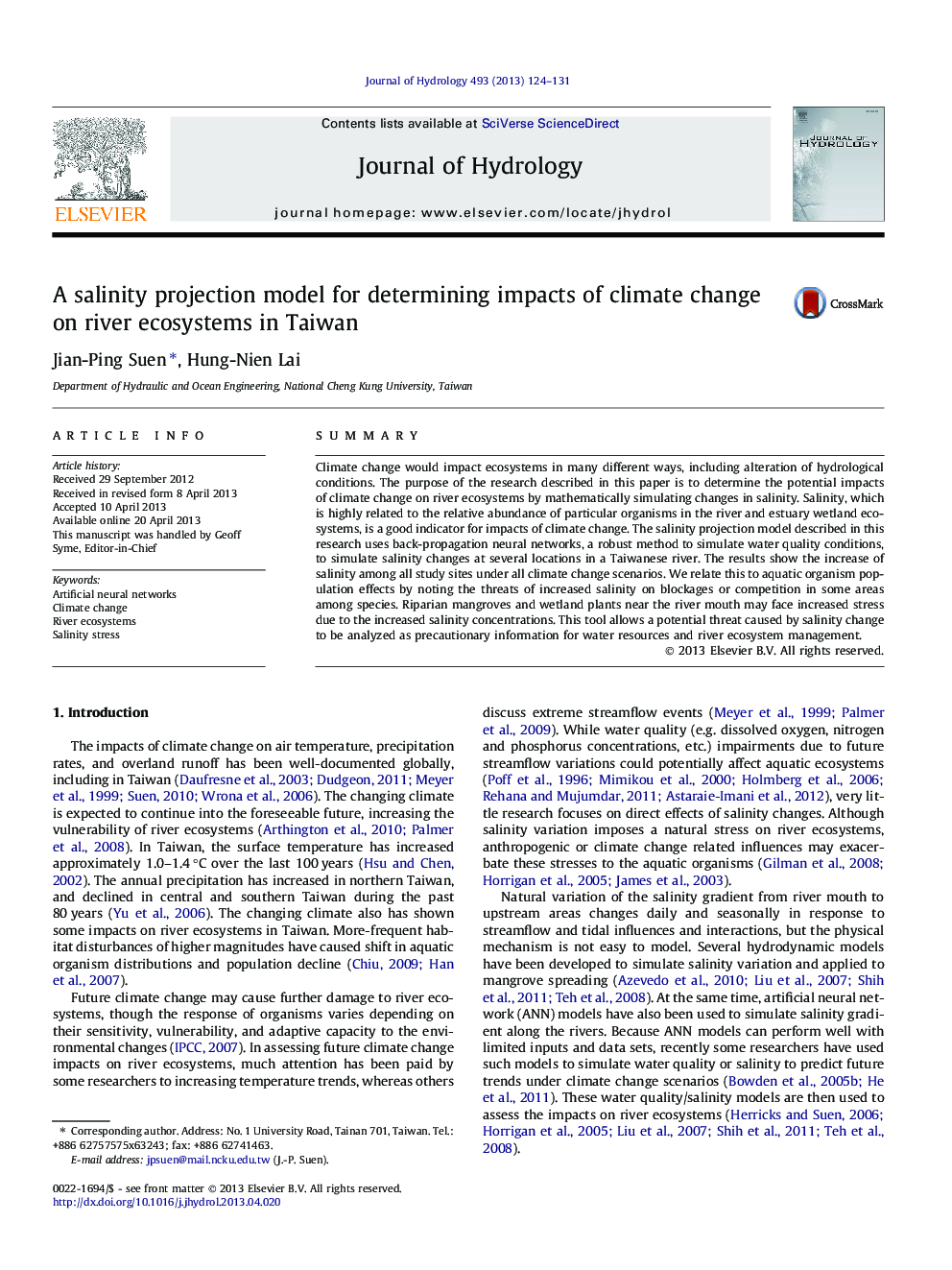| Article ID | Journal | Published Year | Pages | File Type |
|---|---|---|---|---|
| 4576267 | Journal of Hydrology | 2013 | 8 Pages |
•An ANN salinity model is developed to project future salinity.•Competition among freshwater fish in the upstream area may increase.•Salinity increases may affect survival of some mangroves and wetland plants.•Domestic water may have to be checked for salinity standard violation before use.
SummaryClimate change would impact ecosystems in many different ways, including alteration of hydrological conditions. The purpose of the research described in this paper is to determine the potential impacts of climate change on river ecosystems by mathematically simulating changes in salinity. Salinity, which is highly related to the relative abundance of particular organisms in the river and estuary wetland ecosystems, is a good indicator for impacts of climate change. The salinity projection model described in this research uses back-propagation neural networks, a robust method to simulate water quality conditions, to simulate salinity changes at several locations in a Taiwanese river. The results show the increase of salinity among all study sites under all climate change scenarios. We relate this to aquatic organism population effects by noting the threats of increased salinity on blockages or competition in some areas among species. Riparian mangroves and wetland plants near the river mouth may face increased stress due to the increased salinity concentrations. This tool allows a potential threat caused by salinity change to be analyzed as precautionary information for water resources and river ecosystem management.
